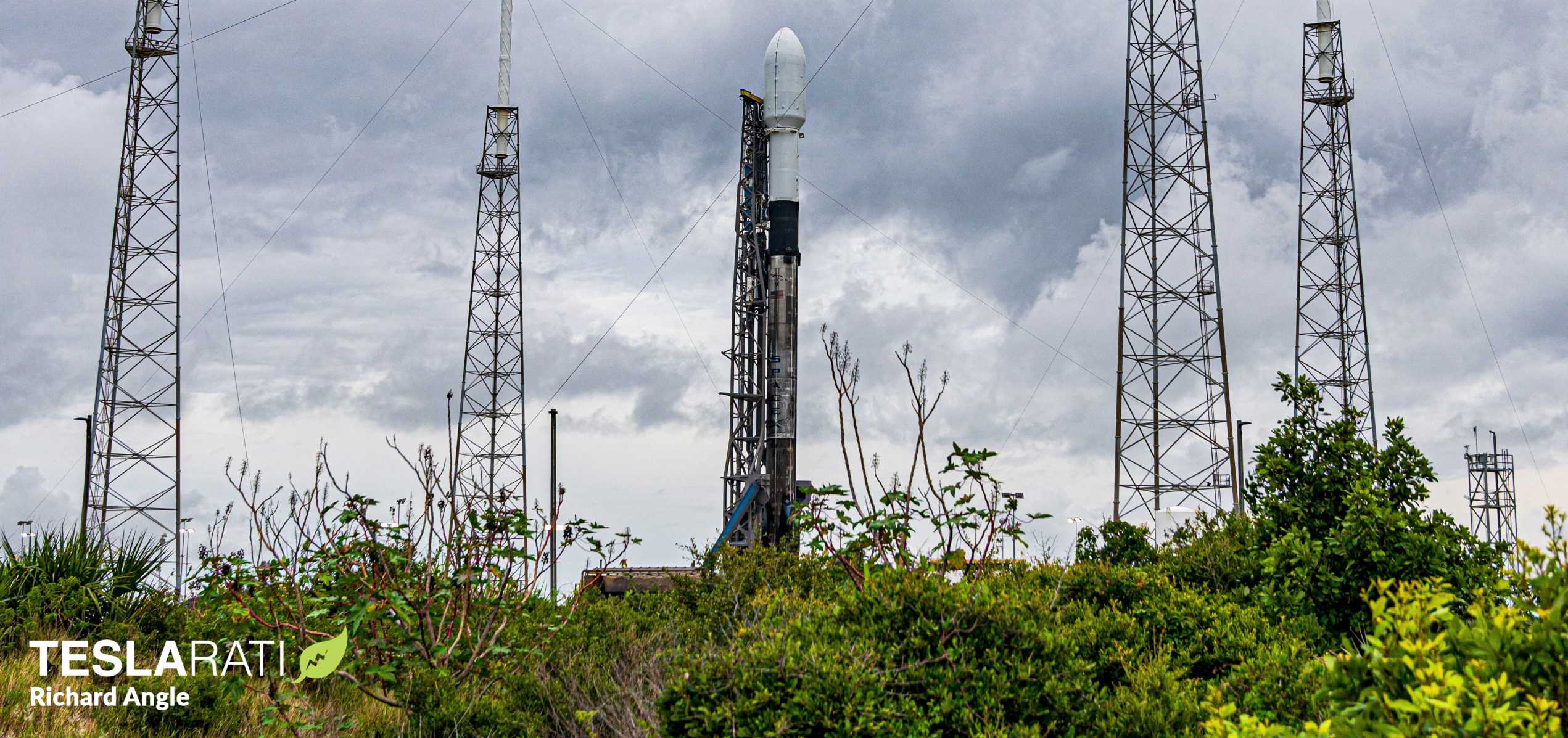
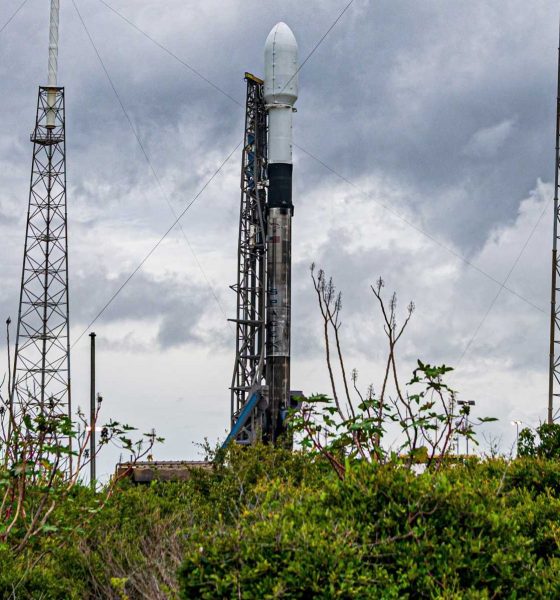
News
SpaceX’s ninth Starlink launch gets a boost from first all-women weather crew
SpaceX’s second Starlink launch of the month is currently tracking towards a June 13th liftoff from Cape Canaveral, Florida.
In order for a rocket launch to get off the ground, however, a perfect mix of ingredients must come together. One of the most crucial ingredients is the weather. Behind the scenes, the U.S. Space Force’s 45th Weather Squadron of the 45th Space Wing Operations Group – based out of Patrick Air Force Base – works diligently to monitor and predict weather conditions leading up to and at the time of liftoff. Every rocket launch that lifts off from Kennedy Space Center or Cape Canaveral Air Force Station utilizes the weather monitoring services provided by the 45th Weather Squadron and SpaceX – the most prolific US launch company is – no different.
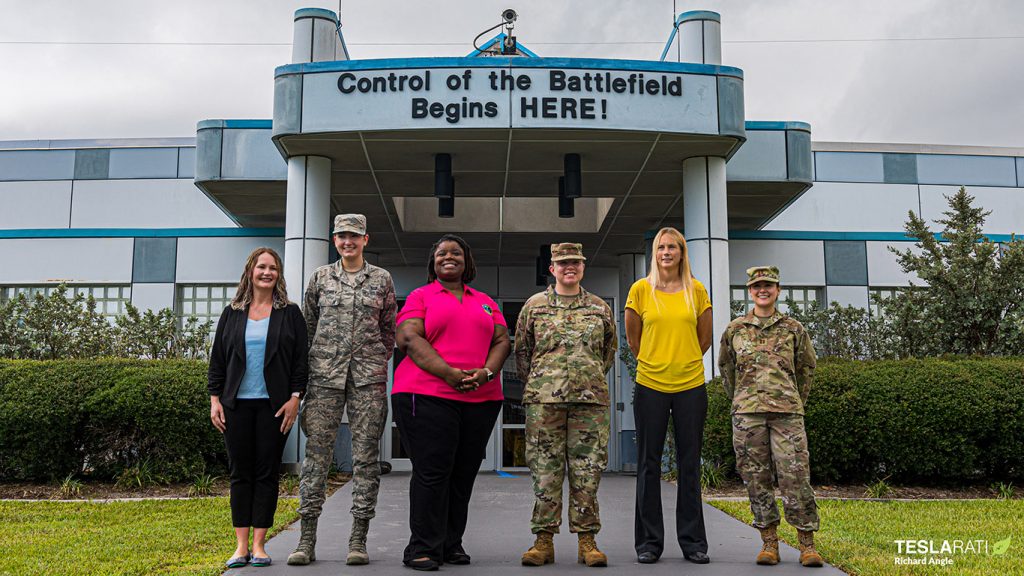
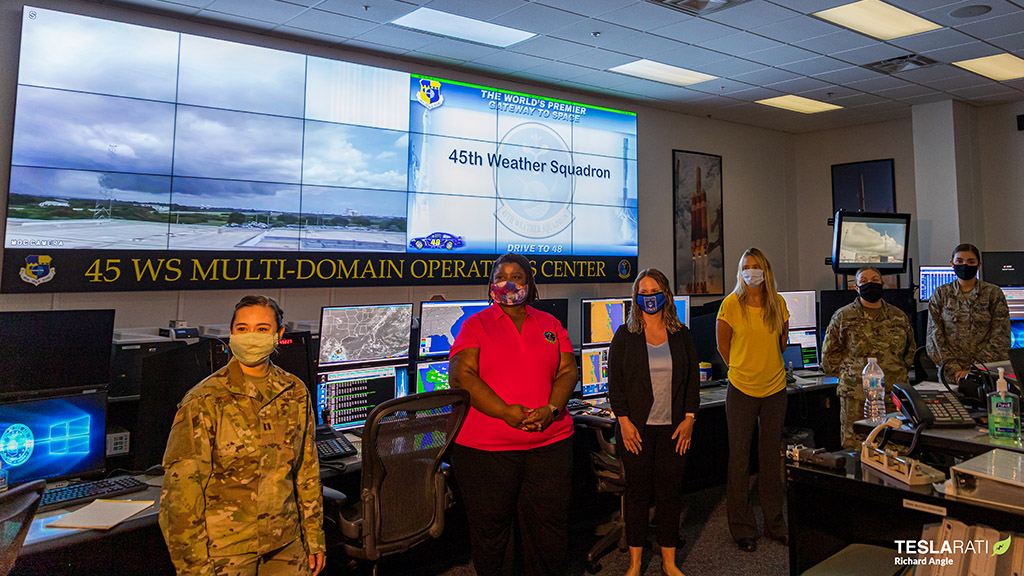
For SpaceX’s upcoming Starlink V1 L8 Rideshare Program mission, the entire weather team on console is female, a first in program history. The team is made up of six women all responsible for specific roles that must coordinate and work cohesively to monitor the weather and determine when it is safe to launch the Falcon 9.
The diverse team is comprised of military personnel and civilian weather officers. It is overseen by Maj Emily Graves, Launch Weather Commander, and orchestrated by Capt. Nancy Zimmerman, Launch Weather Director. A Lead Launch Weather Officer, Arlena Moses, coordinates information between the launch customer, SpaceX, and the 45th while three other members constantly monitor and decipher mountains of weather data.
Airman 1st class Hannah Mulcahey serves as Duty Forecaster and Jessica Williams serves as Radar Launch Weather Officer. Williams is responsible for monitoring information produced by a series of systems every three minutes. She monitors radar data for the amount of precipitation, clouds that are present in the area, and the thickness of the clouds among other things. This information is used to determine whether or not the rocket’s flight path is safe for the duration of the mission. Thick clouds can be an indicator of an unstable atmosphere capable of producing electricity – either naturally as cloud produced lightning or lightning produced by a rocket thrusting through the unstable atmosphere called triggered lightning.
Should radar information be too ambiguous or overexaggerated, the Reconnaissance Launch Weather Officer, Melody Lovin, coordinates the mission with a reconnaissance aircraft known as Weather One. For SpaceX’s upcoming launch, Weather One will only be activated if there is going to be bad weather present for launch, a small possibility if the launch date slips. Other launch customers such as NASA or United Launch Alliance will sometimes have Weather One in the air on standby throughout the duration of the countdown to launch dependent on mission constraints.
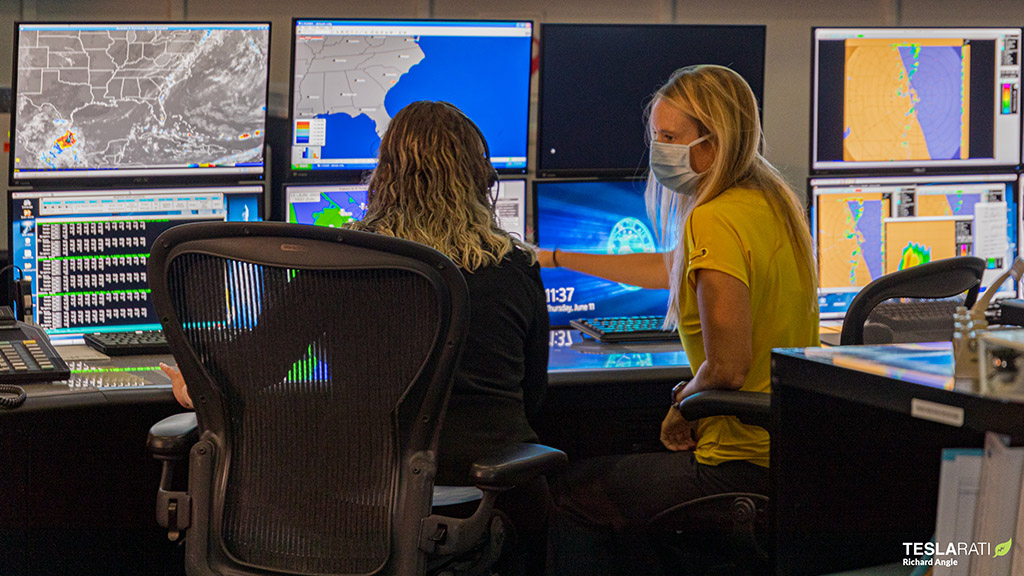
When Launch Weather Director, Capt Nancy Zimmerman, was asked during a media teleconference about how this historical assignment came about, she stated that it was pure coincidence. “It was happenstance. The flight commander of space lift, my supervisor, actually created a team, as he always does, and was like ‘Huh, this is actually an all-female team. Have we ever done this?’ And looking back through the database, you know, it hasn’t been done and he was like ‘Well, should we do this?’ and I said ‘Yes, let’s do it.’” Zimmerman said .
A primary factor enabling an all-female led launch weather team is simply that the workforce of the 45th Weather Squadron is now comprised of more females than ever before. According to Lovin, “We simply have more women on the team. Before we only had one and that was from the year 2000 to 2018 and 2018 came around and a lot of resident launch weather officers left and they also decided to expand the unit.” She went on to state that the massive uptick in launches from the Cape Canaveral Air Force Station and Kennedy Space Center was a driving factor of the weather unit expansion, “when they expanded the unit they hired three more women, so that means we have six women on the team.”
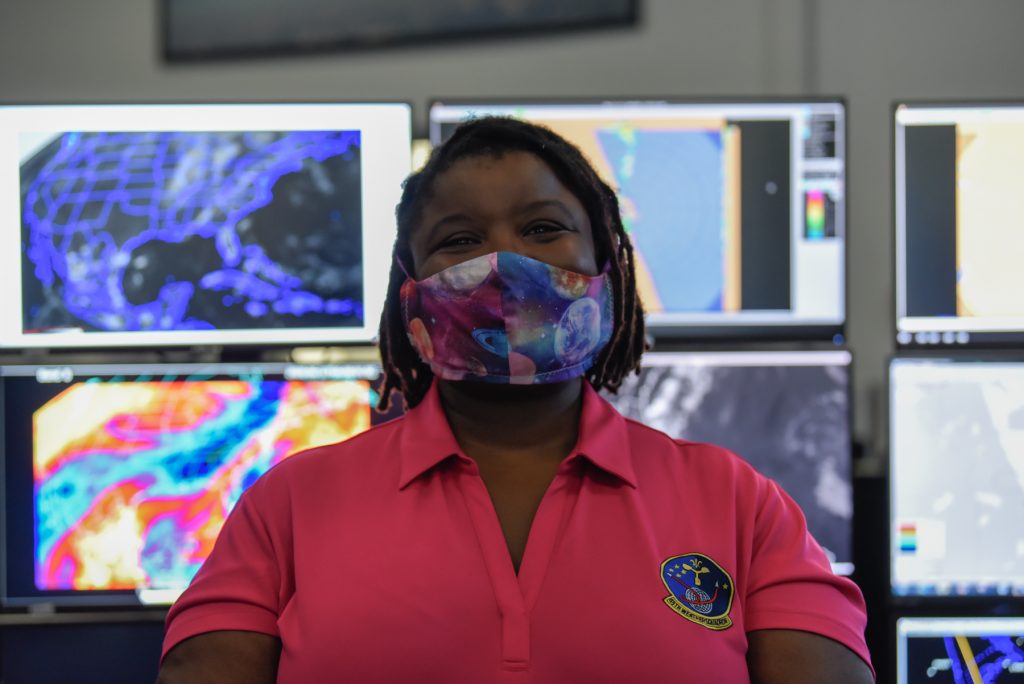
The personnel of the 45th Weather Squadron work day in and day out to monitor and forecast weather conditions ensuring safe air and space operation all year round. When it comes to rocket launches, watching the weather begins early and is done frequently. Weather patterns in central Florida can change rapidly causing a rocket launch attempt to be scrubbed completely, which is what occurred with SpaceX’s first attempt to launch NASA astronauts Bob Behnken and Doug Hurley to the International Space Station.
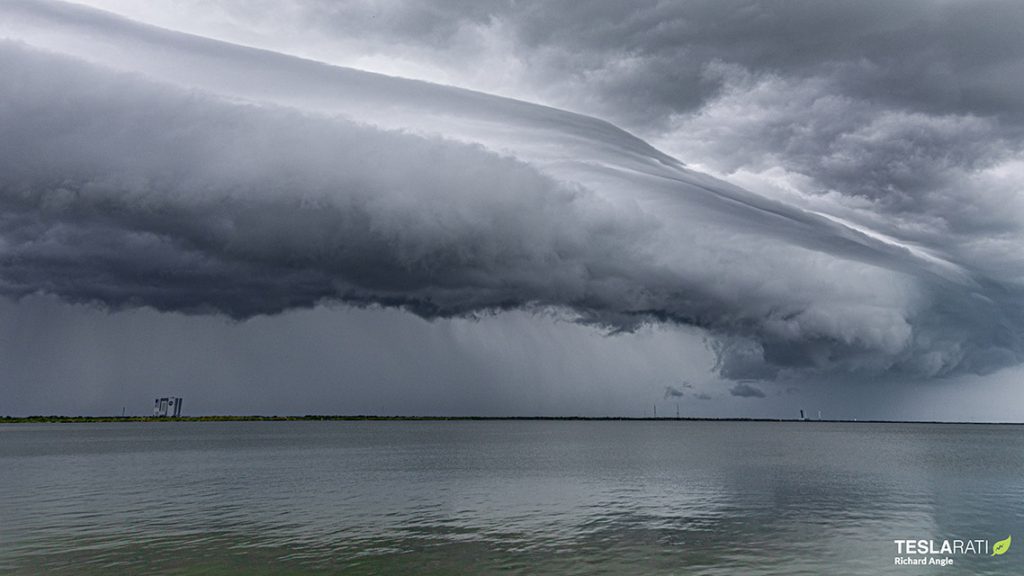
Understanding and tracking developing weather patterns of central Florida allows the 45th Weather Squadron to create launch mission execution forecasts that outline a possibility of violation (POV) of specific launch weather constraints ahead of a launch attempt and any planned backup attempts. These comprehensive forecasts cover everything from systems like frontal boundaries that influence area weather to the type of clouds expected at the time of launch. The forecasts are put together based on a series of ten Lightning Launch Commit Criteria rules and a series of user-defined constraint rules that are specific to each mission and launch vehicle such as SpaceX’s Falcon 9 or United Launch Alliance’s Atlas V for example.
The ten lightning launch commit criteria rules have been in place since the 1980s when an Atlas-Centaur rocket was ultimately lost due to triggered lightning. The rocket launched into a highly unstable and electrified atmosphere full of thick clouds creating the conditions necessary to trigger a lightning strike of the vehicle. It lost its navigation system and began to dangerously veer from its course. It was then destroyed in-flight by launch teams.
Given the high degree of uncertainty of Florida weather, a well-versed team of highly trained weather professionals is a necessary piece of the puzzle that is rocket launching. For the first time, that team is made up of incredibly inspiring females that undoubtedly will make the correct GO/NO GO call on launch day.
For SpaceX’s first Starlink SmallSat Rideshare Program mission, targeted to launch no earlier than (NET) Saturday, June 13 at 5:21 a.m. EDT (09:21 UTC), the 45th Weather Squadron team predicts a 30% chance of violation – meaning that weather is 70% GO for launch. The primary concern is a bank of cumulus clouds expected to be in the area. You can view the full launch mission execution forecast on the 45th Weather Squadron’s website.
Check out Teslarati’s newsletters for prompt updates, on-the-ground perspectives, and unique glimpses of SpaceX’s rocket launch and recovery processes.

News
Tesla China delivery centers look packed as 2025 comes to a close
Needless to say, it appears that Tesla China seems intent on ending 2025 on a strong note.

Tesla’s delivery centers in China seem to be absolutely packed as the final days of 2025 wind down, with photos on social media showing delivery locations being filled wall-to-wall with vehicles waiting for their new owners.
Needless to say, it appears that Tesla China seems intent on ending 2025 on a strong note.
Full delivery center hints at year-end demand surge
A recent image from a Chinese delivery center posted by industry watcher @Tslachan on X revealed rows upon rows of freshly prepared Model Y and Model 3 units, some of which were adorned with red bows and teddy bears. Some customers also seem to be looking over their vehicles with Tesla delivery staff.
The images hint at a strong year-end push to clear inventory and deliver as many vehicles as possible. Interestingly enough, several Model Y L vehicles could be seen in the photos, hinting at the demand for the extended wheelbase-six seat variant of the best-selling all-electric crossover.
Strong demand in China
Consumer demand for the Model Y and Model 3 in China seems to be quite notable. This could be inferred from the estimated delivery dates for the Model 3 and Model Y, which have been extended to February 2026 for several variants. Apart from this, the Model Y and Model 3 also continue to rank well in China’s premium EV segment.
From January to November alone, the Model Y took China’s number one spot in the RMB 200,000-RMB 300,000 segment for electric vehicles, selling 359,463 units. The Model 3 sedan took third place, selling 172,392. This is quite impressive considering that both the Model Y and Model 3 are still priced at a premium compared to some of their rivals, such as the Xiaomi SU7 and YU7.
With delivery centers in December being quite busy, it does seem like Tesla China will end the year on a strong note once more.
News
Tesla Giga Berlin draws “red line” over IG Metall union’s 35-hour week demands
Factory manager André Thierig has drawn a “red line” against reducing Giga Berlin’s workweek to 35 hours, while highlighting that Tesla has actually increased its workers’ salaries more substantially than other carmakers in the country.

Tesla Giga Berlin has found itself in a new labor dispute in Germany, where union IG Metall is pushing for adoption of a collective agreement to boost wages and implement changes, such as a 35-hour workweek.
In a comment, Giga Berlin manager André Thierig drew a “red line” against reducing Giga Berlin’s workweek to 35 hours, while highlighting that Tesla has actually increased its workers’ salaries more substantially than other carmakers in the country.
Tesla factory manager’s “red line”
Tesla Germany is expected to hold a works council election in 2026, which André Thierig considers very important. As per the Giga Berlin plant manager, Giga Berlin’s plant expansion plans might be put on hold if the election favors the union. He also spoke against some of the changes that IG Metall is seeking to implement in the factory, like a 35-hour week, as noted in an rbb24 report.
“The discussion about a 35-hour week is a red line for me. We will not cross it,” Theirig said.
“(The election) will determine whether we can continue our successful path in the future in an independent, flexible, and unbureaucratic manner. Personally, I cannot imagine that the decision-makers in the USA will continue to push ahead with the factory expansion if the election results favor IG Metall.”
Giga Berlin’s wage increase
IG Metall district manager Jan Otto told the German news agency DPA that without a collective agreement, Tesla’s wages remain significantly below levels at other German car factories. He noted the company excuses this by referencing its lowest pay grade, but added: “The two lowest pay grades are not even used in car factories.”
In response, Tesla noted that it has raised the wages of Gigafactory Berlin’s workers more than their German competitors. Thierig noted that with a collective agreement, Giga Berlin’s workers would have seen a 2% wage increase this year. But thanks to Tesla not being unionized, Gigafactory Berlin workers were able to receive a 4% increase, as noted in a CarUp report.
“There was a wage increase of 2% this year in the current collective agreement. Because we are in a different economic situation than the industry as a whole, we were able to double the wages – by 4%. Since production started, this corresponds to a wage increase of more than 25% in less than four years,” Thierig stated.
News
Tesla is seeing a lot of momentum from young Koreans in their 20s-30s: report
From January to November, young buyers purchased over 21,000 Teslas, putting it far ahead of fellow imported rivals like BMW and Mercedes-Benz.

Tesla has captured the hearts of South Korea’s 20s-30s demographic, emerging as the group’s top-selling imported car brand in 2025. From January to November, young buyers purchased over 21,000 Teslas, putting it far ahead of fellow imported rivals like BMW and Mercedes-Benz.
Industry experts cited by The Economist attributed this “Tesla frenzy” to fandom culture, where buyers prioritize the brand over traditional car attributes, similar to snapping up the latest iPhone.
Model Y dominates among young buyers
Data from the Korea Imported Automobile Association showed that Tesla sold 21,757 vehicles to the 20s-30s demographic through November, compared to BMW’s 13,666 and Mercedes-Benz’s 6,983. The Model Y led the list overwhelmingly, with variants like the standard and Long Range models topping purchases for both young men and women.
Young men bought around 16,000 Teslas, mostly Model Y (over 15,000 units), followed by Model 3. Young women followed a similar pattern, favoring Model Y (3,888 units) and Model 3 (1,083 units). The Cybertruck saw minimal sales in this group.
The Model Y’s appeal lies in its family-friendly SUV design, 400-500 km range, quick acceleration, and spacious cargo, which is ideal for commuting and leisure. The Model 3, on the other hand, serves as an accessible entry point with lower pricing, which is valuable considering the country’s EV subsidies.
The Tesla boom
Experts described Tesla’s popularity as “fandom culture,” where young buyers embrace the brand despite criticisms from skeptics. Professor Lee Ho-geun called Tesla a “typical early adopter brand,” comparing purchases to iPhones.
Professor Kim Pil-soo noted that young people view Tesla more as a gadget than a car, and they are likely drawn by marketing, subsidies, and perceived value. They also tend to overlook news of numerous recalls, which are mostly over-the-air software updates, and controversies tied to the company.
Tesla’s position as Korea’s top import for 2025 seems secured. As noted by the publication, Tesla’s December sales figures have not been reported yet, but market analysts have suggested that Tesla has all but secured the top spot among the country’s imported cars this year.








